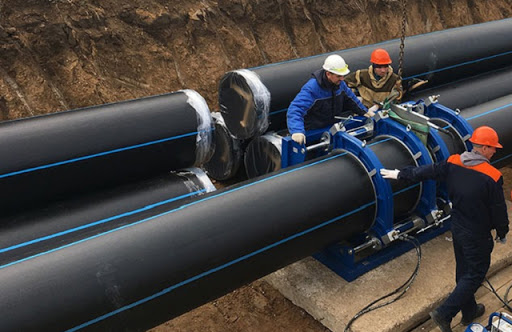
Pipe installation is a crucial aspect of plumbing, involving the proper fitting and connection of pipes to ensure a seamless flow of water or gas within a building. Whether for new construction or renovations, precise pipe installation is essential for the overall functionality and longevity of a plumbing system.
Basic Steps for Pipe Installation:
- Planning and Design:
- Evaluate the plumbing needs.
- Create a detailed plan for pipe layout and connections.
- Material Selection:
- Choose appropriate pipes (e.g., PVC, copper, PEX) based on the application and local building codes.
- Measuring and Cutting:
- Accurately measure and cut pipes to fit the designated spaces.
- Thread and Seal:
- Thread pipes if necessary and ensure proper sealing with Teflon tape or pipe dope.
- Assembly and Connection:
- Connect pipes using fittings, ensuring tight and secure joints.
- Testing:
- Conduct pressure tests to identify leaks or weak points in the installation.
- Insulation:
- Insulate pipes in areas prone to temperature extremes to prevent freezing or overheating.
- Support and Secure:
- Properly support pipes and secure them to prevent movement or damage.
- Final Inspection:
- Conduct a final inspection to verify compliance with building codes and regulations.
- Documentation:
- Maintain detailed records of the installation for future reference.
Frequently Asked Questions (FAQs):
- Q: What types of pipes are commonly used for installations?
- A: PVC, copper, PEX, and galvanized steel are commonly used depending on the application.
- Q: How long does a typical pipe installation take?
- A: The duration varies based on the complexity of the project, but it can range from a day to several weeks.
- Q: Can I install pipes without professional help?
- A: While simple tasks may be possible, it’s advisable to consult with a professional plumber for complex installations to ensure safety and compliance.
- Q: What are the signs of a faulty pipe installation?
- A: Signs include leaks, low water pressure, discolored water, and unusual noises in the pipes.
- Q: Are there regulations for pipe installations?
- A: Yes, local building codes dictate the materials, methods, and standards for pipe installations.
- Q: How do I choose the right pipe diameter for my installation?
- A: Consult with a plumber to assess water flow requirements and select the appropriate pipe diameter.
- Q: Can pipes be installed in cold climates without freezing issues?
- A: Yes, by properly insulating pipes and taking preventive measures, freezing issues can be minimized.
- Q: What is the lifespan of a typical pipe installation?
- A: The lifespan depends on factors such as materials used, maintenance, and environmental conditions, but a well-installed system can last decades.
- Q: How can I detect leaks after a pipe installation?
- A: Look for water stains, mold growth, or unusual water bills. Professional plumbers can also conduct leak detection tests.
- Q: Is a permit required for pipe installations?
- A: In many jurisdictions, a plumbing permit is required for pipe installations. Check local regulations to ensure compliance.
